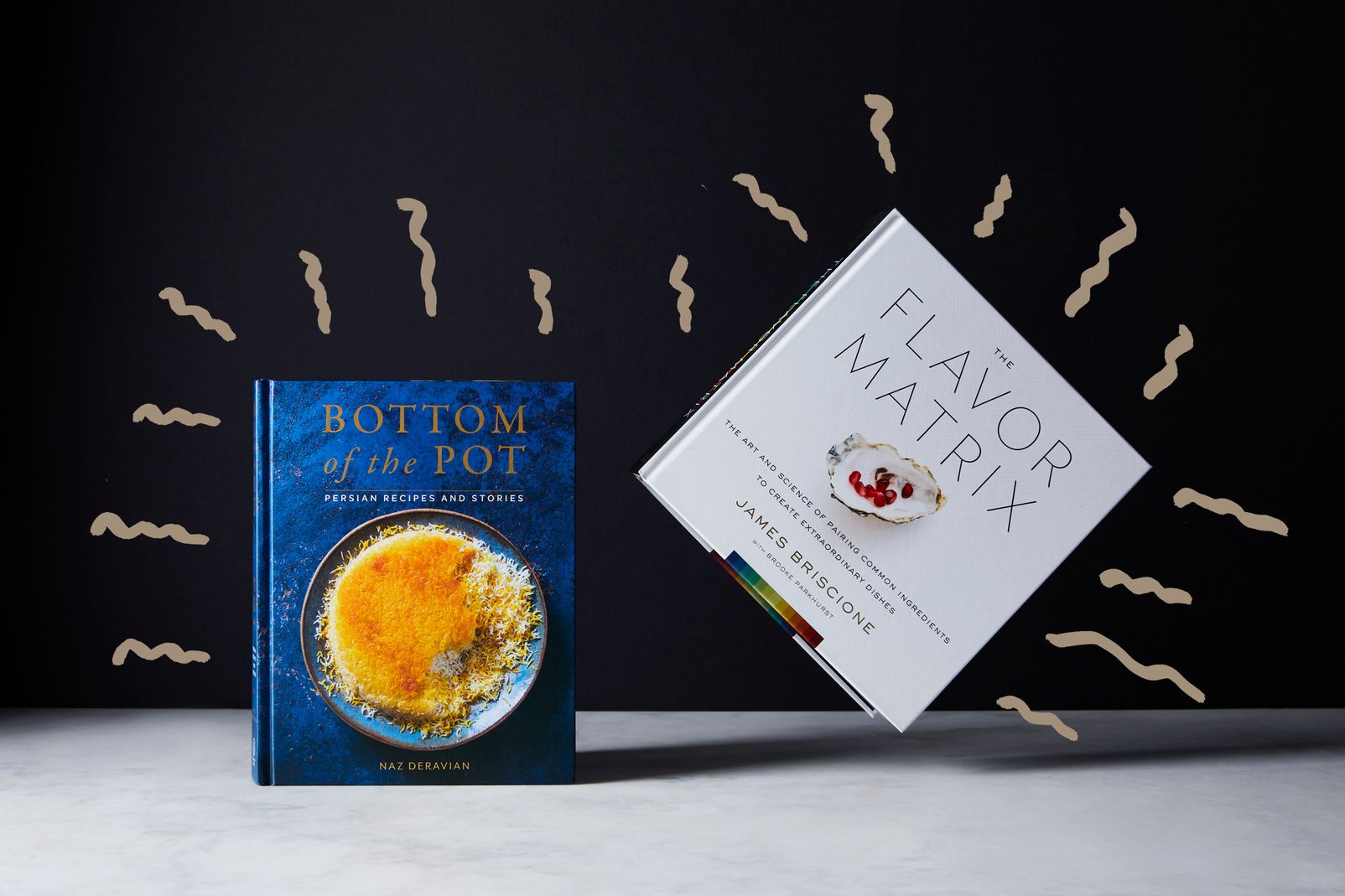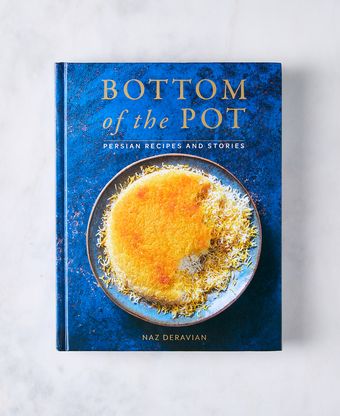When I was approached by Food52 about the possibility of being a judge in this year’s Piglet Tournament of Cookbooks, I was truly excited. My life revolves around food, personally and professionally, and cookbooks have always been a source of inspiration as well as education.
Having written a few books myself, I know what a labor of love they can be. I also know firsthand how much time and effort go into making a cookbook that is not only a good read, but also a carefully curated collection of amazing recipes. To me, a great cookbook has recipes that are well-written, well-tested, and that leave little or no guesswork for someone who otherwise may be flying blind in the kitchen. It also gives guidance, as well as new ideas, to the experienced cook—whether that means sharing new techniques, new flavor combinations, or even sometimes transporting the reader to another time, place, or frame of mind. Most importantly, a great cookbook tells a story through food, and makes people want to get cooking!
I had already been thinking about some of this before I received the two books I would be judging. I am not sure what I was expecting, but when I opened the package, I was surprised to see The Flavor Matrix by James Briscione with Brooke Parkhurst, and Bottom of the Pot by Naz Deravian. I wondered to myself how I would be able to choose between these two very different books. Even at first glance, it was easy to see how distinct they would be in their approach to cooking, their “feel,” and the messages they convey. In my mind, it was going to be like choosing between chardonnay and pinot noir.
I decided that I would just get reading and cooking, and figured that somewhere along the way, the winning book would show itself to me. I enlisted the help of my test kitchen team, and we chose six recipes from each book.

First, we dove into The Flavor Matrix: The Art and Science of Pairing Common Ingredients to Create Extraordinary Dishes. It is such an interesting collection of recipes, written by a husband and wife team. James Briscione’s fascination with the elements of flavor and how flavors combine began when he was a chef-instructor at the Institute of Culinary Education. There, he was working on a project with the IBM supercomputer, Watson, and wanted to use the supercomputer to determine complementary flavor pairings based on their chemical compounds. This book uses this research to shine light on the seeming mystery of why certain flavors and ingredients naturally go together.
The Flavor Matrix is organized into sections by ingredient, ranging from “Allium” to “Crustacean” to “Tropical Fruit.” At the start of each section, there is a “wheel” chart of complementary flavors for each ingredient listed. Some of the flavor combinations we came across were classic, but others were real eye-openers. We decided to cook Walnut and Spiced Yogurt “Hummus,” roasted Brussels sprouts drizzled with Umami Vinaigrette, roasted Jerusalem artichokes with Gin and Brown Butter Emulsion, Spice-Roasted Grapes, Coffee and Five-Spice Roasted Rainbow Carrot Salad, and Banana and Chile Hot Sauce. We all fell hard for the roasted Jerusalem artichokes—the texture and earthy flavor of the artichokes themselves merged seamlessly with the nutty emulsion. Honestly, a match made in heaven.

The hummus (with the surprising inclusion of miso), also really hit a home run. We enjoyed it on toasted pita bread and with vegetable crudités. The author also suggested pairing this dip with roasted shrimp, and I can imagine that being a wonderful combination. Unexpectedly, the real showstopper was the banana hot sauce. Green bananas and fiery hot chiles—who knew?! One of my test kitchen team members brought some home after testing, and caught her husband sneaking spoonfuls of the leftover hot sauce from the fridge. All of these recipes were stunning in their complexity, yet fairly simple in preparation. I am still thinking about those artichokes. And that hot sauce.
The book itself is a very modern, if not cerebral, approach to cooking. The author is clearly an expert on the science of taste, and gives us imaginative and ambitious food pairings based on that. In this sense, the book is an inspiration. I think it would be a great addition to a young cook’s reference library. My son EJ has really taken to cooking, and I encourage him to read as much as he can. This book stood out to me as a great teacher for him, particularly because of the helpful charts showing complementary ingredients for many flavors and textures. We’ve all had that moment in the kitchen when a soup or sauce needs a touch of something to make it special, and we are looking for some fresh ideas. These are the moments in which this book would come in very handy.

After a great learning experience with The Flavor Matrix, we then moved on to Bottom of the Pot: Persian Recipes and Stories. One warning about this book: It is so well-written, with such captivating prose, that you might find it hard to put down and actually get in the kitchen! I read it nearly cover to cover.
In Bottom of the Pot, Naz Deravian writes about the recipes and culture of Iran, a place that she left as a child and never stopped thinking about. She shares with us memories of her home—many of them centered around the dinner table and intertwined with scents, tastes, and sounds of sizzling pots and stirring spoons—and these sensations came alive for me as I read through the book’s pages. Naz made me nostalgic for my own memories as she beautifully recounts her respect and love for her culture by sharing its beauty through food. My inspiration for cooking started in my mother’s kitchen as a kid, and my most vivid childhood memories surround food: the smells of kale soup simmering and Portuguese bread baking come to mind in particular. As a chef, these memories have never left me and continue to be the foundation of my passion for food.
Even the title comes from an important food memory. As Deravian so perfectly describes in the prologue, the inspiration for the book’s title is a quintessential Persian rice dish, Tahdig, which is often served at family feasts in Iran. At the bottom of the pot of cooked rice, there’s a crispy, golden layer of rice, the tahdig, that is highly anticipated (and fought over) each time it is served. Turning the rice out onto a serving platter to reveal the crispy layer is reason enough for applause. This dish is one major way in which the skill of a Persian cook is judged, for better or worse, and an important part of the author’s understanding of her cuisine.
When I finally finished reading this book, I could just about smell the aromas of a Persian kitchen, so I set out to make those imaginations a reality. I had some knowledge of the richness of the Persian cuisine from a former Food Network colleague whose family was from Iran, so I was anticipating the exciting and complex flavors that we were about to encounter.

There were so many recipes within the book that called out to us that we had trouble narrowing down our choices. We settled on Kashki Bademjan (a tangy roasted eggplant dip), Kookoo Kadoo (an herby egg dish with zucchini), Sour Cherry and Feta Crostini, Aash-e Dogha (yogurt soup with meatballs), Ghalieh Mahi (spicy tamarind fish and herb stew), and Pistachio Sanbuseh (pistachio turnovers). I should mention that it took us most of an afternoon to round up some of the ingredients from no fewer than five international markets. We were on a hunt to find things like fenugreek, kashk (a deliciously salty, spoonable farmer’s cheese), dried rose petals, barberries, sour cherries, and dried mint. I am sure that most of these things could easily be sourced online or at international markets in larger metropolitan cities.
The Kashki Bademjan was an amazing place to start. Eggplant happens to be one of my favorite vegetables, and lately I’ve been experimenting with it more and more as I’ve been working on a Mediterranean-inspired menu. I loved the technique that Naz shares for roasting eggplant: Put it in the oven first, and then simmer it on the stovetop with aromatics to finish it. Once pureed with some kashk, the result was a smoky and velvety dip that was unbelievable on its own. But with the addition of a fried onion–garlic–mint topping, and a dollop of a little extra kashk—out of sight! Even eggplant non-believers were converted with this recipe. It tasted quite complex, but actually came together in no time.
The Ghalieh Mahi was deep and soulful—the kind of food that makes you feel well-loved and comforted on the worst of days. Its base is made by blending three bunches of bright cilantro, tamarind for tanginess, and a touch of honey for sweetness. This base is cooked down into a rich sauce, to which we added local redfish fillets (rather than cod, which the recipe specifies). Served over a bed of fragrant basmati rice, the stew made for an unforgettable meal.

Next, the Kookoo Kadoo, which again had such an interesting combination of flavors. Kookoos are closest to what we might know as a frittata. The author explains how they can be made with any number of base ingredients, and are often where leftovers go, along with bits of this and that from the fridge or pantry. This version uses zucchini and yellow squash, and just enough egg to bind the vegetables. The vegetables are grated, salted, and left to drain before being combined with the eggs, along with some aromatics, barberries, mint, cinnamon, turmeric, rose petals, saffron, nutmeg, and orange zest. This was my first experience cooking with barberries—think of them like a tart currant—and I found that they gave a surprising pop of tang against the backdrop of the mild squash and eggs. Bites of leftover kookoo made for a nice snack, straight from the fridge.
For the Sour Cherry and Feta Crostini, we had to improvise by using jarred sour cherries, since sour cherries were not available at the market when we went. The substitution seemed to work great regardless, and we ended up with an incredible cherry topping, perfumed with rose water at the end. This topping would be just as at home over a scoop of vanilla ice cream or yogurt as it was with crumbled salty feta and pistachios on crusty, toasted bread.
I could go on about all of the dishes that we cooked from Bottom of the Pot, because there wasn’t one of them that we didn’t thoroughly enjoy. But I think the thing that really sealed the deal for me was the way the author managed to convey her deep love for Iran, and Persian cooking, without coming across as overly sentimental. She made me want to immediately visit her home country to explore all of the traditional dishes that still hold such a special place in her heart. Being a child from an immigrant family myself, I could really relate to her strong connection with the tastes and flavors of a faraway place called “home.”
The Verdict:
In the end, I think that the choice between these two very engaging books really comes down to why I cook, and what food means to me. I know that a great cook is also a skilled technician, and that to understand the fundamental principles of cooking, cooks should know the science behind it. The Flavor Matrix is an excellent way to develop expertise in this area.
But ultimately, for me, cooking comes more from the heart than the head, and it is a true act of love. As a matter of fact, my personal mantra has always been “food of love." So I can say without hesitation that I connected more with Naz Deravian’s words from the heart in Bottom of the Pot. This book has gorgeous photography, alluring stories, and recipes that tantalize the taste buds with their flavor combinations. It is a true declaration of love to Persian food and cooking. And that is why I choose Bottom of the Pot as the winner.



20 Comments
I do have Bottom of the Pot. When I flipped through the pages, I knew I had to buy it. The primary decider to purchase it was the Roulette Cake on p.322. I grew up with Swiss Rolls in Western Europe but never in our wildest imaginings would we have thought you could put rose petals on a cake. The combination of Rose Petals, Pistachios, and Strawberries is just heavenly to behold. As I continued going through the book, Naz’s stories of being an immigrant making her way from Iran via Rome, Vancouver, and Los Angeles, and her memories of Iran that she left at age six are spellbinding. The other thing that struck me as I went through the book is that the recipes are very doable for an intermediate level cook willing to buy some unusual ingredients for us such as barberries or copious amounts of dried mint. Naz has a way of elevating ingredients that most of us are fortunate to have on hand such as potatoes and eggs to a new level by adding feta and dried mint. P.212 Smooshed Egg and Potato. Homely and familiar but now reinvented.
So far I have only cooked one dish, and for me, it is a knockout. P.146 Celery Stew, but there is chicken in it too. Naz asks “If you’ve ever wondered what to do with an entire bunch of celery, then this is the dish for you.” Yes! You have read my mind. A whole bunch of celery is inexpensive and will survive the nuclear blast but what to do with it besides adding it to soups? Not having ever cooked any Iranian food I had to get over myself and use an entire head of chopped parsley as opposed to 2 teaspoons, half a head of fresh mint, and 3 tablespoons of dried mint. I won’t say any more, you will have to try it, but it was effortless and produced a taste sensation like none other. The picture in the book does not do it justice as it is so bright, tantalizing, and vibrant. The taste was like eating a meadow of fresh grass in the sunshine if you could do such a thing. Maybe there will be a run on dried mint in the grocery stores. A wonderful uplifting book.